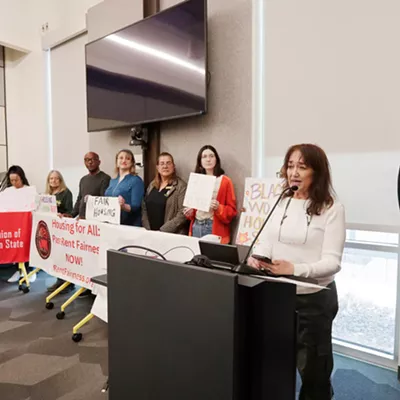One glance at the charts and graphs from the think tank Urban Institute, and it looks like Spokane is a sick puppy. The city’s unemployment rate is going down slower than the rest of the country, its housing prices are still falling, and crime is going up.
By comparison, Boise fared better than the rest of the country — and, ahem, Spokane — with faster-falling unemployment numbers, rising home prices and falling crime.
But local leaders say Spokane isn’t as bad off as those stats might suggest. And a look into the competing numbers sufficiently muddies the waters.
The “vast majority” of jobs being filled here are by younger workers taking the slots of older people who are retiring, according to John Dickson, director of WorkSource Spokane. So in that sense, measuring how many new jobs are created does not capture the whole picture. And those jobs that younger workers are taking from retiring workers tend to be in manufacturing as well as professional jobs like banking and accounting, according to Dickson. In other words, they pay better than average.
Still, while the Urban Institute data shows Spokane gaining 3,900 new non-farm jobs over the past year, another think tank puts that general time frame in a less rosy context. The Lilac City’s job growth between May 2011 and May 2012 ranked 172nd among the 200 biggest cities in America, according to the Milken Institute. Over all its economic indicators, the Milken Institute rated Spokane 161st out of 200. Not exactly auspicious, especially compared to Boise’s 86th place.
As for housing, it’s another mixed bag. The Urban Institute, using federal data, says Spokane’s average house costs about $160,000, down 2.5 percent from the same time in 2011. But Rob Higgins, executive vice president of the Spokane Association of Realtors, says things are getting better. And his data pegs the average home price at about the same number — $160,000 — but as going up since 2011.
“We hit the bottom in 2011, and we’ve steadily been coming out of it with positive numbers for 2012,” says Higgins.
On top of that, the actual number of housing sales in the Spokane area is up 10 percent in 2012, according to data by the National Association of Realtors.
But the combination of housing and employment reveals one trend that isn’t necessarily a surprise. The job market and housing market are likely tied together as one reason for Spokane’s slow recovery.
“Construction is really continuing to suffer,” Dickson says. “This is the first recession in a century that [construction] hasn’t brought us out of recession.”
Patrick Jones, executive director for the Institute for Public Policy and Economic Analysis at Eastern Washington University, says the Urban Institute’s data shouldn’t be taken as the final word. The institute is looking at only one year of data, rather than multi-year trends, and doesn’t consider information like wage growth, he says.
“Generally, Spokane is doing better than Albuquerque, Reno, and to some degree Portland,” Jones says. “It’s not doing as well in the recovery compared to Boise and Seattle.”
But Jones points out that Spokane’s “worse than average” fall in the unemployment rate may not mean much, because Spokane could only be a fraction off from being completely average.
The one data set that does worry Jones is crime, which “could discourage companies from relocating” to Spokane.
Says Jones: “That’s something that Spokane is an anomaly vis-a-vis the other regional metros.”

















